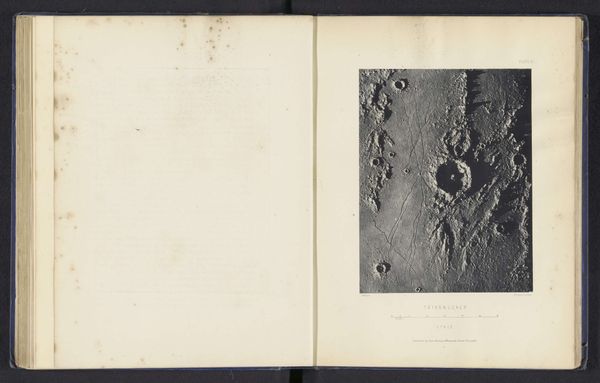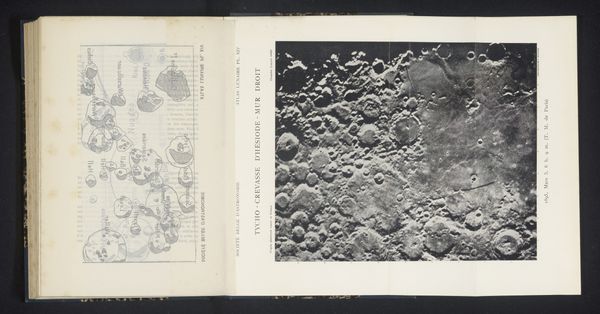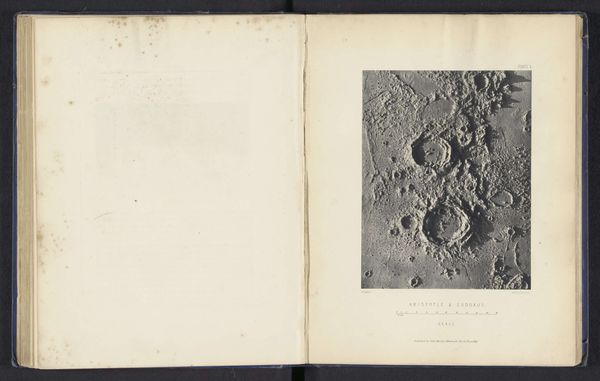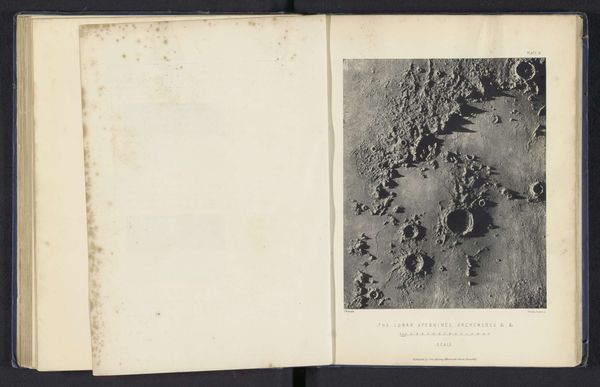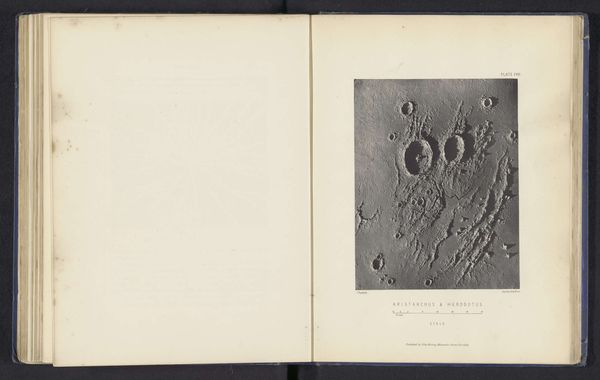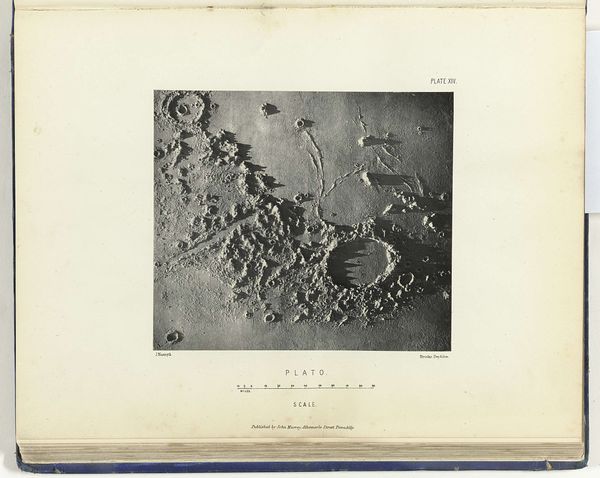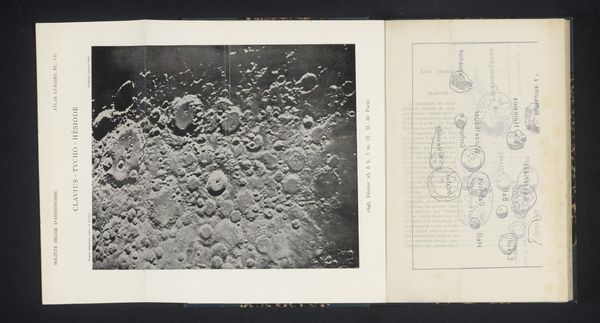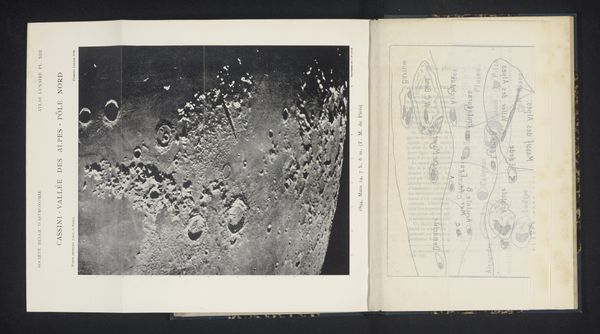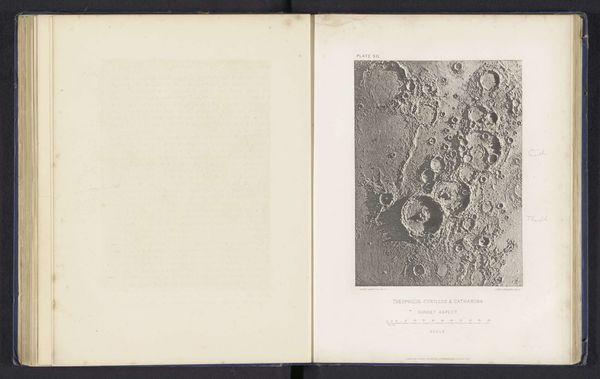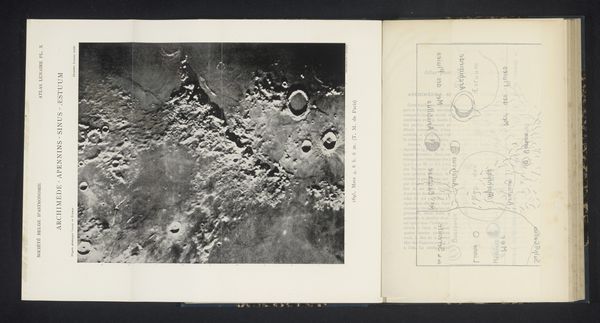
print, photography, engraving
#
ink paper printed
# print
#
landscape
#
photography
#
geometric
#
engraving
#
historical font
Dimensions: height 177 mm, width 134 mm
Copyright: Rijks Museum: Open Domain
This photogravure of the moon’s surface, depicting the Mercator and Campanus craters, was created by James Nasmyth. Rather remarkably, he didn’t take it through a telescope. Instead, Nasmyth built plaster models based on his astronomical observations, which he then photographed and turned into prints. The texture is key here. He wanted to present an image as scientifically accurate as possible. Plaster allowed him to convincingly recreate the pock-marked, cratered surface of the moon. The shadows are stark and the contrast is very strong. The final image is incredibly tactile, almost as if you could reach out and touch the lunar landscape. There’s something slightly uncanny about this method. Nasmyth wasn’t interested in artistic interpretation, but accuracy. Yet, by using plaster, he introduced an element of artifice. It makes you consider the relationship between observation, representation, and the very human impulse to recreate the world around us. This inventive approach challenges traditional boundaries between scientific documentation and artistic creation.
Comments
No comments
Be the first to comment and join the conversation on the ultimate creative platform.
